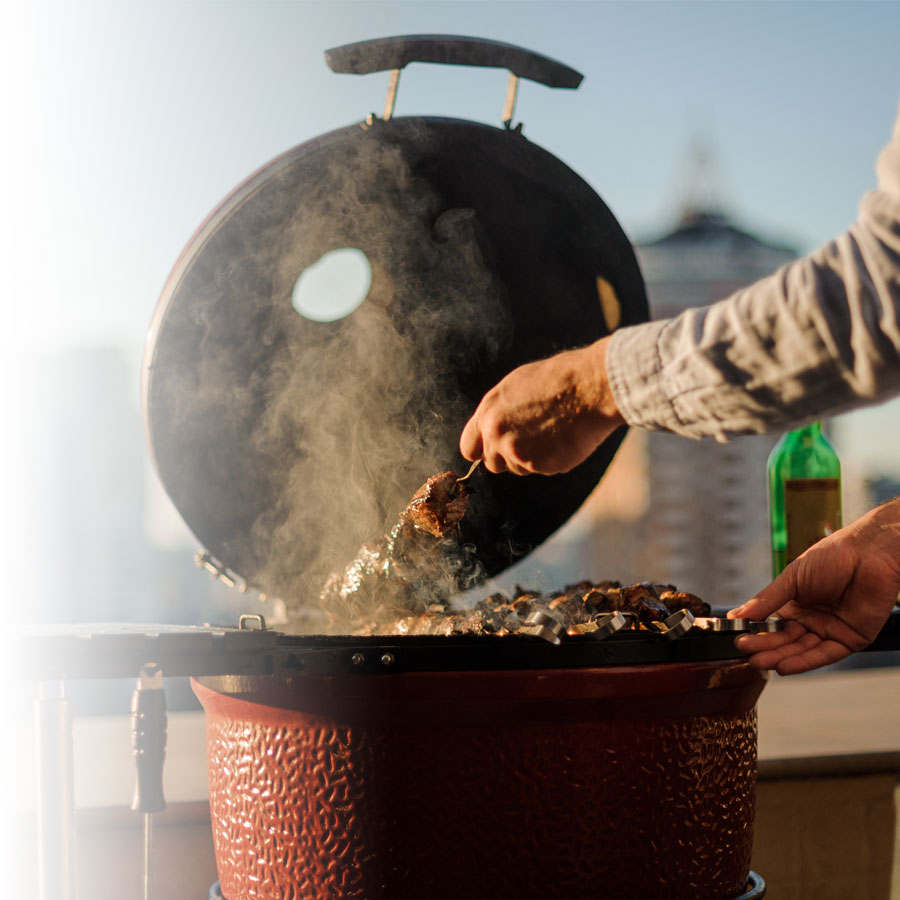As with any minor injury, minor burns require special care to promote healing and prevent complications.
A minor burn is often described as a “first-degree burn”. It affects the epidermis, the outer layer of the skin. The skin appears dry and red, and is painful. When pressure is applied with a finger, the skin turns white. In most cases, minor burns heal within three to seven days and do not leave a scar.
A minor burn can sometimes cause small lesions on the skin, such as blisters. You should generally not burst the blister in order to avoid infection. Healing can sometimes take longer if the skin is broken. Scarring is possible.
Most common burns are minor and can be treated at home. However, more serious or extensive burns require immediate medical care. This text focuses on minor burns only and does not address treatment of second- or third-degree burns.
How to treat a minor burn
There are five basic steps to treat a minor burn. Steps 1 and 2 are interchangeable.
1
Cool the skin
After having removed the source of the burn (i.e. scalding coffee), rinse the skin with lukewarm water for at least 20 minutes. A gentle stream of water is best. Cool compresses can also be applied for up to 30 minutes. This cools the burn area and limits irritation. It also helps relieve the pain.
2
Clean the skin
Use a mild soap (ideally fragrance-free) and warm water to clean the burn. Next, dry the wound by gently dabbing it using a clean cloth or towel. It is not necessary to disinfect the wound. Alcohol, iodine, hydrogen peroxide or any other disinfectant provide no benefit. Then, clean the skin daily and every time you change the dressing.
Immediately remove any rings, watches, bracelets, or any other items that could put pressure on the area around the wound, in case there is swelling (edema). Do not apply oil, milk or any other greasy substance on the skin.
3
Prevent infection
A burn is a lesion that is at risk for infection, especially when the skin is broken. You need to watch for signs of infection and if required, you may need to apply a topical antibiotic. Carefully follow the product manufacturer’s instructions or those given by your pharmacist. If a dressing is used to cover the wound, the antibiotic should be applied when the dressing is changed.
4
Cover the burn with a dressing
Once the burn has been cooled and cleaned, use a compress or dressing to cover it. This will provide some pain relief. Not every minor burn needs to be covered with a dressing. This step is especially necessary if the skin is broken. In this case, a sterile, non-adhesive gauze dressing can be used. The dressing should be changed once or twice a day.
5
Moisturize the skin
Once the burn seems to have healed, applying a moisturizer can help the skin to regain all of its elasticity. Use a quality fragrance-free moisturizer that does not have any additives. Your pharmacist can recommend an appropriate product.
How to relieve pain and itching
Minor burns can cause discomfort or pain. In such case, you can take an analgesic or an anti-inflammatory drug, but speak to your pharmacist first. Ask your pharmacist to help you select the product that is most suitable for you.
If you experience itching subsequent to a burn, you may want to use a medication, such as an oral antihistamine like diphenhydramine, which could be beneficial, especially at night. Some topical products could also be useful. Ask your pharmacist to recommend one.


